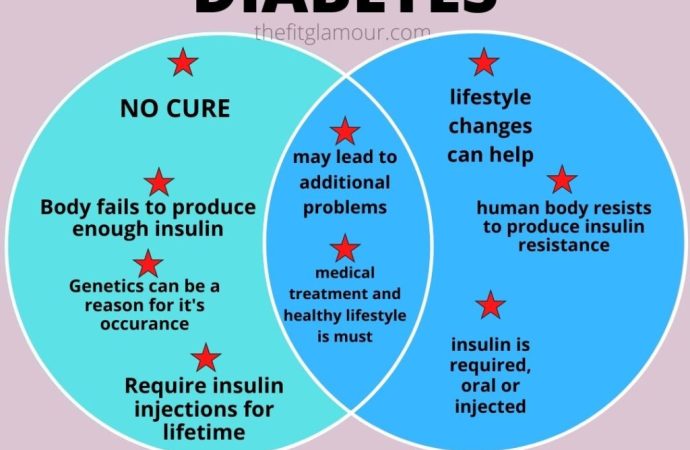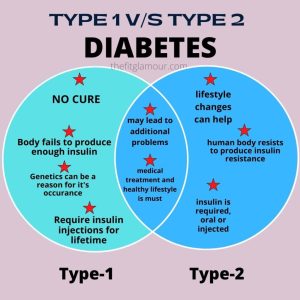Introduction In the realm of medical diagnoses, sometimes conditions wear disguises that make them look like something else entirely. Type 2 diabetes, while a distinct entity, has several look-alikes. In this article, we will delve into the world of common misdiagnoses and differential diagnoses for Type 2 diabetes. From Type 1 diabetes to gestational diabetes
Introduction
In the realm of medical diagnoses, sometimes conditions wear disguises that make them look like something else entirely. Type 2 diabetes, while a distinct entity, has several look-alikes. In this article, we will delve into the world of common misdiagnoses and differential diagnoses for Type 2 diabetes. From Type 1 diabetes to gestational diabetes and other metabolic disorders, recognizing these impostors is key to accurate diagnosis and effective management.
The Type 1 vs. Type 2 Dilemma
Type 1 diabetes and Type 2 diabetes share the word “diabetes,” but they are not identical twins. In fact, they have distinct causes and characteristics. The misdiagnosis of one as the other can have significant consequences.
- Type 1 Diabetes: This form of diabetes is characterized by an autoimmune response in which the body’s immune system attacks and destroys the insulin-producing beta cells in the pancreas. It typically appears in childhood or adolescence, and individuals with Type 1 diabetes are dependent on insulin for survival.
- Type 2 Diabetes: Unlike Type 1, Type 2 diabetes is primarily driven by insulin resistance, where the body’s cells do not respond effectively to insulin. It often develops in adulthood and is initially managed with lifestyle changes and oral medications, although insulin therapy may be required in some cases.
https://thefitglamour.com/wp-content/uploads/2020/12/difference-between-type-1-and-type-2-diabetes-1024×1024.jpg
The Gestational Diabetes Surprise
Gestational diabetes is another potential look-alike for Type 2 diabetes. It occurs during pregnancy and can be a temporary condition. However, individuals with gestational diabetes are at an increased risk of developing Type 2 diabetes later in life.
- Gestational Diabetes: This form of diabetes is characterized by elevated blood sugar levels that appear during pregnancy. While it usually resolves after childbirth, it’s a significant risk factor for developing Type 2 diabetes in the future.
Metabolic Disorders: The Hidden Players
Some metabolic disorders can mimic the symptoms of diabetes, leading to potential misdiagnoses. Two notable examples are:
- Polycystic Ovary Syndrome (PCOS): PCOS is a common condition in women that can lead to hormonal imbalances, including insulin resistance. This insulin resistance can result in elevated blood sugar levels, leading to a misdiagnosis of diabetes.
- Lipodystrophy: Lipodystrophy is a rare disorder that affects the distribution of body fat. In some cases, it can lead to metabolic abnormalities, including insulin resistance and diabetes.
Maturity-Onset Diabetes of the Young (MODY): A Genetic Intruder
Maturity-Onset Diabetes of the Young (MODY) is a rare genetic form of diabetes that can be misdiagnosed as Type 2 diabetes. However, MODY is caused by specific genetic mutations and typically appears at a younger age. Accurate diagnosis is essential for determining the most appropriate treatment.
The Importance of Differential Diagnosis
Differential diagnosis, which involves considering and ruling out various conditions based on symptoms and test results, is crucial in accurately identifying diabetes and distinguishing it from look-alike conditions. Healthcare professionals use a combination of clinical judgment and diagnostic tests to make the correct diagnosis.

https://www.endocrinologyadvisor.com/wp-content/uploads/sites/9/2019/12/diabetes.medications.supplies_SH_715778998.jpg
Conclusion
Type 2 diabetes may be a common condition, but its diagnostic journey is not always straightforward. Several conditions and situations can be mistaken for Type 2 diabetes, including Type 1 diabetes, gestational diabetes, and various metabolic disorders. Recognizing these look-alikes is essential for accurate diagnosis and effective management. If you or someone you know is concerned about diabetes, it’s vital to seek the expertise of healthcare professionals who can navigate the diagnostic landscape and ensure the correct path to care and treatment.


















Leave a Comment
Your email address will not be published. Required fields are marked with *